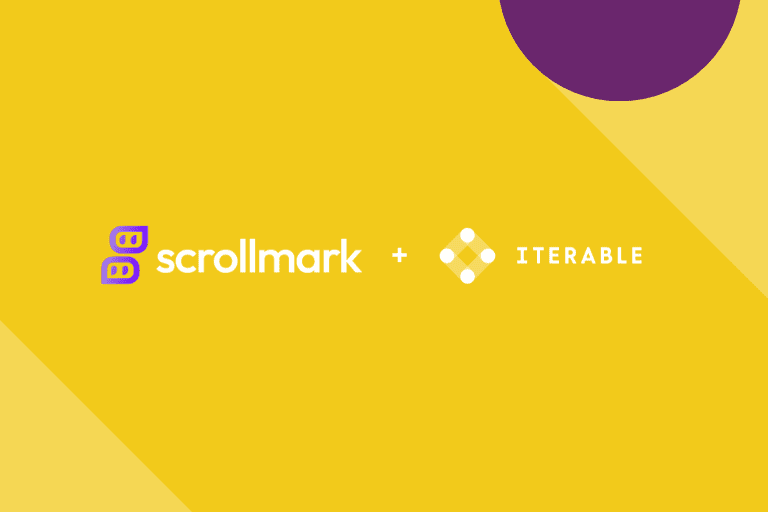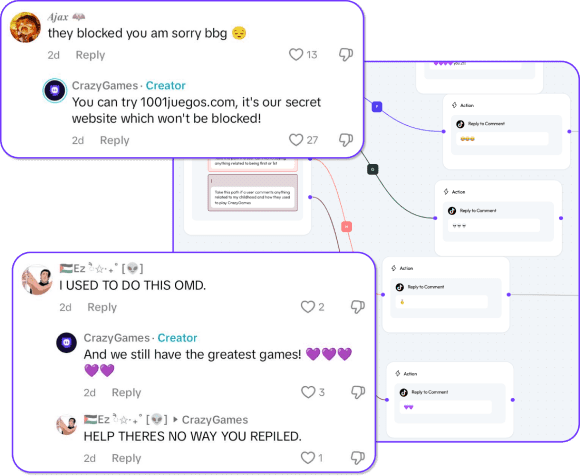Social media has become the discovery engine for one-third of shoppers seeking new products.
Seasoned retailers and e-commerce executives furrow their brows when I present this fact.
They’ve spent decades optimizing search engines, email lists, and display advertising—the traditional pillars of digital commerce—only to watch TikTok and Instagram rewrite the rules of discovery and purchase.
Their skepticism is understandable, but the data doesn’t lie. Study after study has confirmed what the commerce team at Facebook used to tell me: Social commerce is going to overshadow every other channel in retail and e-commerce.
And they were right.
The pandemic may have accelerated this shift, but the wheels were already in motion long before.
Let’s rewind a bit.
In 2015, Pinterest started testing buyable pins. Facebook launched its Marketplace in 2016, and Instagram rolled out shoppable posts in 2017.
By introducing these features, the platforms were laying the groundwork for social commerce 1.0.
Fast forward to today, and the numbers are staggering: Half of all shoppers use social media to find new products, and 59% make a purchase directly through these platforms.
The lines between social media, entertainment, and shopping have blurred, creating new opportunities and challenges for retailers and e-commerce brands.
It’s no surprise then that Facebook, Instagram, TikTok, and every other major social media platform have been continuously adding more advertising features and marketplaces.
Their goal is clear: make the most of this shift and grab a sizeable piece of the retail pie.
And their next big bet? Social messaging as the channel for personalized, conversational commerce.
This focus on messaging isn’t a shot in the dark. Let me furrow them brows even more: 70% of people expect to have conversational experiences with brands on social media.
And from what I’ve seen working with brands, consumers aren’t just expecting these conversations—they’re actively seeking them out.
Let’s look at how this shift to conversational commerce is already playing out across industries and what it means for brands.
Consumers are adopting social messaging for commerce
Working closely with over 50 e-commerce brands in the last two years has given me a front-row seat to a clear trend: People are increasingly open to engaging with brands through social messaging, whether it’s the brand initiating contact or the consumer reaching out with a specific need.
Customers are commenting on brand posts and messaging brands for all sorts of reasons:
- To ask about a product before purchasing
- For customer support on an existing order
- Responding to promotional messages or ads that caught their eye (this happens when your creative stands out)
- Participating in contests or giveaways (who doesn’t love free stuff?)
On the flip side, I’ve helped brands use social messaging to:
- Send order updates or shipping notifications
- Provide personalized product recommendations
- Offer real-time customer support in chats
- Run targeted promotional campaigns that feel more like a conversation than an ad
What I’m seeing is that platforms like Facebook Messenger and Instagram Direct have essentially become the express lane for customer service, personalized shopping experiences, and sweet, sweet promotional deals.
We’re entering social commerce 2.0, where personalized, conversational experiences are taking center stage. If your strategy isn’t embracing social messaging, you’re basically still using dial-up in a 5G world.
But here’s the million-dollar question I often get: How does being in the right chat at the right time really improve customer relationships and boost the bottom line?
Let’s explore that.
Brands see higher returns with social messaging
I’ve been watching brands bring up their bottom line and ROI by using social messaging in three key ways.
First, it boosts your engagement, turning indifferent users into active participants in your brand story.
Second, it opens up new avenues for building a loyal community, creating fans and ambassadors who stick with you for the long haul.
And finally, it smooths out the bumps in the customer journey, making it easier than ever for people to go from product discovery to purchase.
Let me break down each of these three benefits for you.
1. Increase in engagement
Consumer engagement on social media is linked to a 66% increase in purchase intention.
Seems like a no-brainer, right? The more you’re able to get people to like, comment, share, mention, and direct message (DM), the more they’ll remember your brand in buying situations.
But here’s the thing—many brands are dropping the ball. They get that initial interaction, and then…crickets. They miss the chance to really connect with the user.
I get it. It’s tough to be “on” all the time, replying to every comment, DM, and mention. That’s where smart automation comes in clutch. And no, I’m not talking about templated, robotic responses.
With AI that actually gets the context of a user’s comment or DM, you can use automation to fire off relevant replies and catch people at the peak of their interest to keep that momentum rolling.


Mark AI understands each comment’s context
2. Ease in building relationships and loyalty
What we’ve covered so far about increasing engagement can be like fireworks—bright, exciting, but over in a flash.
Now, don’t get me wrong. Spikes of engagement here and there are good to begin with, but what you really want is a steady burn, right?
That’s where building a loyal community using social messaging comes into play.
Loyalty on social media can be difficult to crack, but if you gamify the experience in the DMs, as our customers have done, you’ll see amazing results.
This is how it works: You reward your customers points for engaging with your brand, and when they reach certain milestones, you slide into their DMs with coupons, free samples, exclusive items, merch, and more.
- Did they share your post? Points.
- Left a glowing comment? More points.
- Tag you in a story? You better believe that’s worth some serious points.
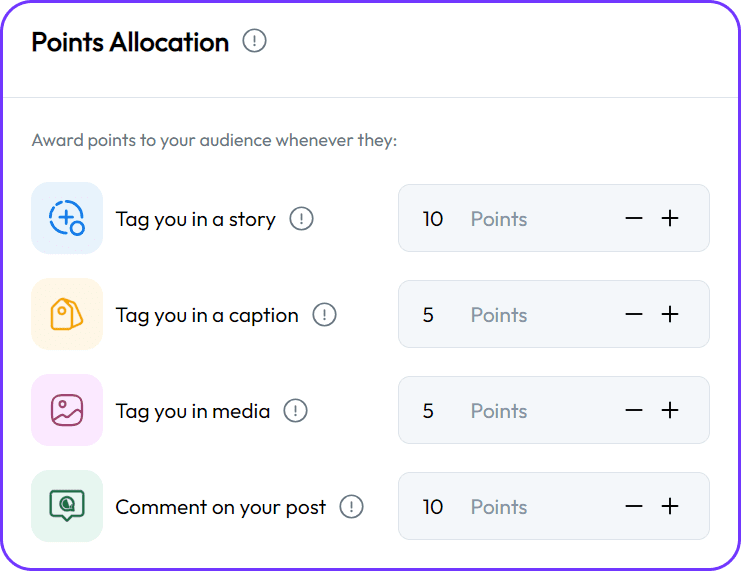

Example of a social loyalty program inside Scrollmark
In my experience, social messaging really flexes its muscles in terms of ROI by opening the door to long-term customer relationships.
Social-first brands like Glossier attribute up to 90% of their revenue to returning customers—which shows the financial benefits of creating a loyal community.
And to build this kind of engaged, loyal community of customers, you’ve got to first build an engaged, loyal community of followers and fans.
Social loyalty programs built on social messaging are designed to increase engagement across the board. They tap into how people naturally interact on social platforms, turning every interaction into an opportunity to deepen the connection between customer and brand.
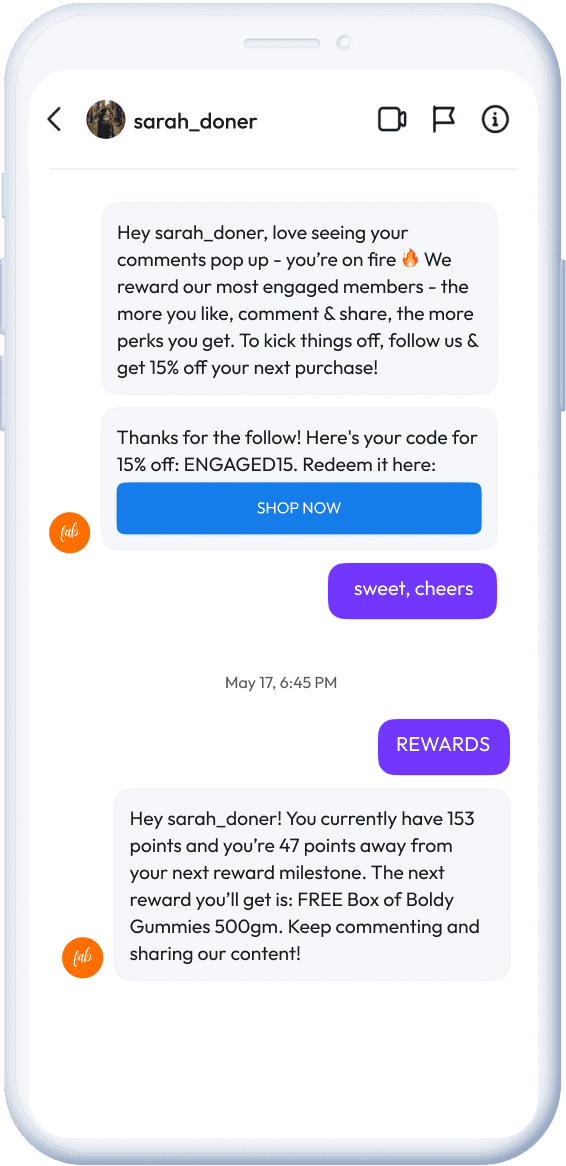

Followers who engage get enrolled in a social loyalty program
By rewarding not just purchases but also social actions like shares, comments, and user-generated content (UGC), you encourage customers to engage more frequently. By strengthening your meaningful relationships with your customers, you can grow their lifetime value.
3. Reduction in purchase journey friction
Now, we’ve talked about the long game of building an engaged community with social loyalty, but what about your short game?
As Les Binet and Peter Field famously pointed out in The Long and Short of It, you need a balance of brand building (or community building, in our case) and sales activation for optimal growth.
And guess what? Social messaging can be your secret weapon for that sales activation piece, too.
While loyalty programs that use social messaging build your brand affinity over time, they can also drive immediate sales by reducing friction in the customer journey.
Personalized interactions tweaked by AI can guide customers through their purchase journey like a knowledgeable (and tireless) sales assistant, understanding and addressing each customer’s unique needs.
I’ve seen this work wonders in boosting return on ad spend (ROAS) for paid social campaigns, with brands turning casual comments on their product ads into a direct sales opportunity.
When someone comments on your product ads, instead of hoping they’ll navigate to your website, you can bring the product right to them in their DMs.
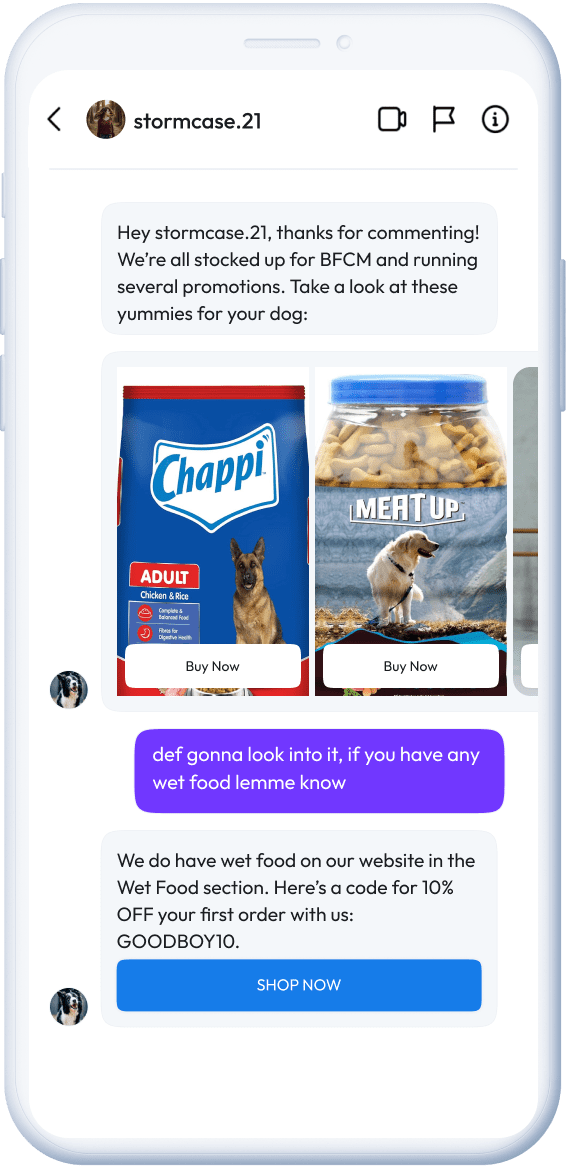

Product recommendations sent to ad commenters
Personalized product links directly in DMs cut out steps and make it super easy for customers to buy.
And if they don’t buy right away, you can always slide a personalized coupon into their DM to nudge them.
Emails can get lost in the shuffle; social DMs get seen and opened. They’re a whole different ballgame. They cut through the noise and land right where your customers are already spending their time.
I’m seeing 80-90% open rates for DMs for our customers on average. Compare that to the average email open rate of 21.5%, and you’ll see why I’m so excited about this.
Social messaging will be your e-commerce lifeline in 2025 and beyond
All these tactics—from increasing engagement with smart AI responses, to building loyalty through social programs, to reducing friction with personalized DM outreach—they’re all part of a cohesive strategy.
The common thread?
They’re using social messaging to make the path from interest to purchase as engaging, short, and smooth as possible.
When it comes to retail and e-commerce, less friction doesn’t just mean more conversions. It means happier customers, stronger brand relationships, and, ultimately, a healthier bottom line.
Higher customer lifetime value, increased repeat purchases, and a steady stream of organic, word-of-mouth growth—these are the rewards waiting for brands that adopt social messaging as an important channel in their marketing mix.
The brands that thrive in the coming years will be those that recognize this shift and lean into it. The future of retail isn’t just online—it’s social, it’s conversational, and it’s more personal than ever before.
































